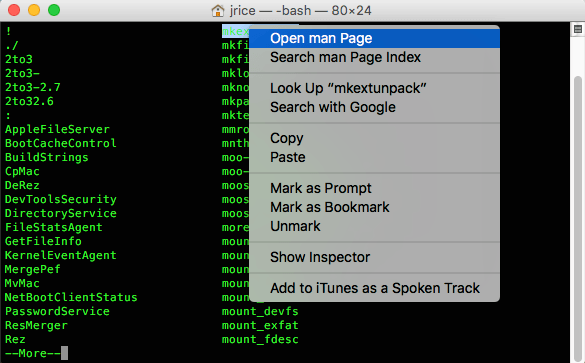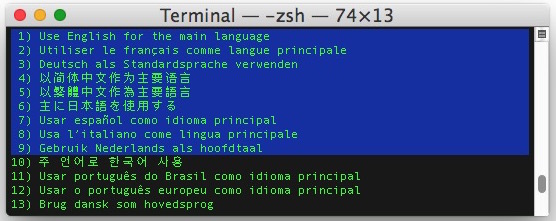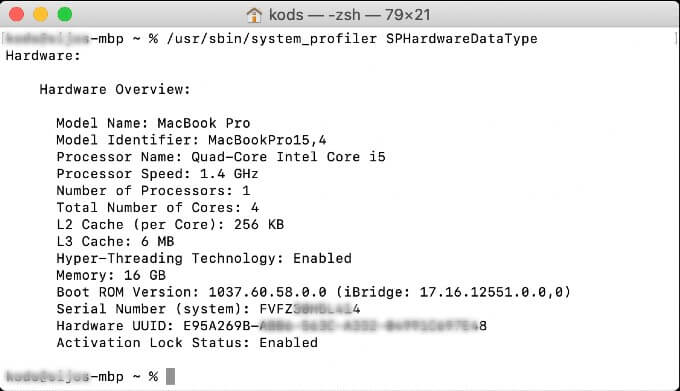

- #List processor mac command line how to#
- #List processor mac command line manual#
- #List processor mac command line software#
How to List Running Processes in Linux using the top and htop Commands

#List processor mac command line manual#
Type man ps in your terminal to read the manual for the ps command, which has a complete reference for all options and their uses. If you specify more than one of these options, then all processes which are matched by at least one of the given options will be displayed. You can choose to display a certain set of processes by using any combination of options (like -A -a, -C, -c, -d, -E, -e, -u, -X, -x, and others). CMD returns the name of the command that launched the process.TIME returns the total amount of CPU usage.TTY returns the terminal type you're logged into.

This will display the process for the current shell with four columns: To test this, just open your terminal and run the ps command like so: The ps command displays your currently running processes in real-time. You can list running processes using the ps command (ps means process status). How to List Running Processes in Linux using the ps Command Likewise, when you run a command in the terminal (like curl ), it creates a process that will only stop when the command finishes executing or is terminated.
#List processor mac command line software#
Basic knowledge of navigating around the command-line.Ī process is an instance of a running computer program that you can find in a software application or command.įor example, if you open your Visual Studio Code editor, that creates a process which will only stop (or die) once you terminate or close the Visual Studio Code application.Have you ever wondered how you can check all the programs running on your machine? Then this article is for you, as I'll show you how to list, manage, and kill all the running processes on your Linux machine. So multiple programs can run at the same time. One beautiful feature of the Linux operating system and of modern computers in general is that they provide support for multitasking. These applications can include a browser, code editor, terminal, video conferencing app, or music player.įor each of these software applications that you open or commands you run, it creates a process or task. You can also find us on Twitter and Facebook.Every day, developers use various applications and run commands in the terminal. We hope this article can help you to get VM list detail on Hyper-V Cluster. If you liked this article, then please share it with the others. Here is the PowerShell command you can use to get the information from the VM Get-VM –ComputerName (Get-ClusterNode) | Select | ID' Expression=



 0 kommentar(er)
0 kommentar(er)
